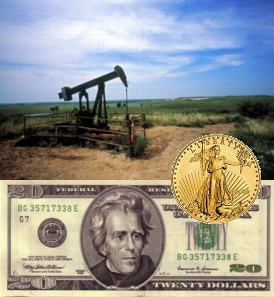Here’s an article with some interesting numbers on the price of oil and its correlation with the dollar and the GDP. Courtesy of Kathy Lien. 
Hurricane Premium Off the Table, What is the Impact on Growth
With Hurricane Gustav being downgraded to a tropical depression, the Hurricane Premium is off the table. Oil prices have plunged more than $10 a barrel since Friday with $100 a barrel now within striking distance. The rally in the US dollar is a direct result of the fall in oil prices. Since the beginning of the year, we have seen a 70 percent correlation in the price of the EUR/USD and crude.
The last time crude prices were at these levels was back in April. Falling crude prices has widespread benefits for the US economy. Like the correlation between oil and the EUR/USD, the correlation between annualized US CPI growth and oil prices has been more than 70 percent since 2006. This supports our belief that inflation going forward will ease. Today’s manufacturing ISM number is the first example of that. The prices paid component of ISM dropped for the second month in a row with the index now at the lowest level since February.

How Does Oil Impact Growth?
According to a study by the International Energy Agency a few years ago, a sustained $10 a barrel rise in oil prices reduces world GDP by at least 0.5 percent, other things being equal. [my emphasis] Since the middle of July, oil prices have fallen approximately $40 a barrel, which means that the recent drop in oil prices could add as much as 2 percent to GDP. We do not expect the reverse contribution to be as great, but if oil prices remain at current levels or continue to fall, a 1 percent contribution to GDP is certainly reasonable.
The rally in US stocks and the US dollar reflects the market’s belief that both consumers and businesses have a lot to benefit from the drop in crude prices. Back when oil was trading at $108 a barrel in April, the national average of gas prices was approximately $3.40 a gallon. Although the national average is currently $3.685 a gallon, prices were as high as $4.11 a little more than one month ago.
Further Gains for the US Dollar?
We expect the US dollar to continue to gain strength as long as we do not see another Category 4 Hurricane. The easing of inflationary pressures will put the hawkishness of central bankers around the world in question. There are 3 more monetary policy decisions this week (Canada, Eurozone, UK). It may be time for these central bank heads to acknowledge that oil prices have peaked and if they do, expect more weakness in the Euro, British pound and Canadian dollar.


